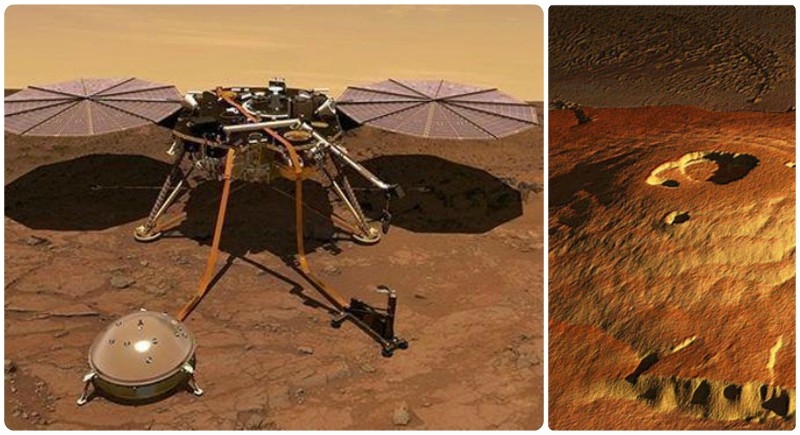NASA to dig the Red Planet’s interior & learn about its volcanoes
Washington, September 4: The Red Planet has some of the tallest mountains in the solar system. They include Olympus Mons, a volcano nearly three times the height of Everest. It borders a region called the Tharsis plateau, where three equally awe-inspiring volcanoes dominate the landscape.

But what geologic processes created these features on the Martian surface? Scientists have long wondered -- and may soon know more.
NASA and DLR (German Aerospace Center) plan to take the planet's temperature for the first time ever, measuring how heat flows out of the planet and drives this inspiring geology. Detecting this escaping heat will be a crucial part of a mission called InSight (Interior Exploration using Seismic Investigations, Geodesy and Heat Transport), managed by NASA's Jet Propulsion Laboratory in Pasadena, California.
InSight will be the first mission to study Mars' deep interior, using its Heat Flow and Physical Properties Package (HP3) instrument to measure heat as it is conducted from the interior to the planet's surface. This energy was in part captured when Mars formed more than 4 billion years ago, preserving a record of its creation. That energy is also due to the decay of radioactive elements in the rocky interior.
The way heat moves through a planet's mantle and crust determines what surface features it will have, said Sue Smrekar of JPL, the mission's deputy principal investigator and the deputy lead for HP3.
"Most of the planet's geology is a result of heat," Smrekar said. "Volcanic eruptions in the ancient past were driven by the flow of this heat, pushing up and constructing the towering mountains Mars is famous for."
While scientists have modeled the interior structure of Mars, InSight will provide the first opportunity to find ground truth -- by literally looking below the ground.
HP3, built and operated by DLR, will be placed on the Martian surface after InSight lands on Nov. 26, 2018. A probe called a mole will pummel the ground, burying itself and dragging a tether behind it. Temperature sensors embedded in this tether will measure the natural internal heat of Mars.
That's no easy task. The mole has to burrow deep enough to escape the wide temperature swings of the Martian surface. Even the spacecraft's own "body heat" could affect HP3's super-sensitive readings.
"If the mole gets stuck higher up than expected, we can still measure the temperature variation," said HP3 investigation lead Tilman Spohn of DLR. "Our data will have more noise, but we can subtract out daily and seasonal weather variations by comparing it with ground-temperature measurements."
In addition to burrowing, the mole will give off heat pulses. Scientists will study how quickly the mole warms the surrounding rock, allowing them to figure out how well heat is conducted by the rock grains at the landing site. Densely packed grains conduct heat better -- an important piece of the equation for determining Mars' internal energy.